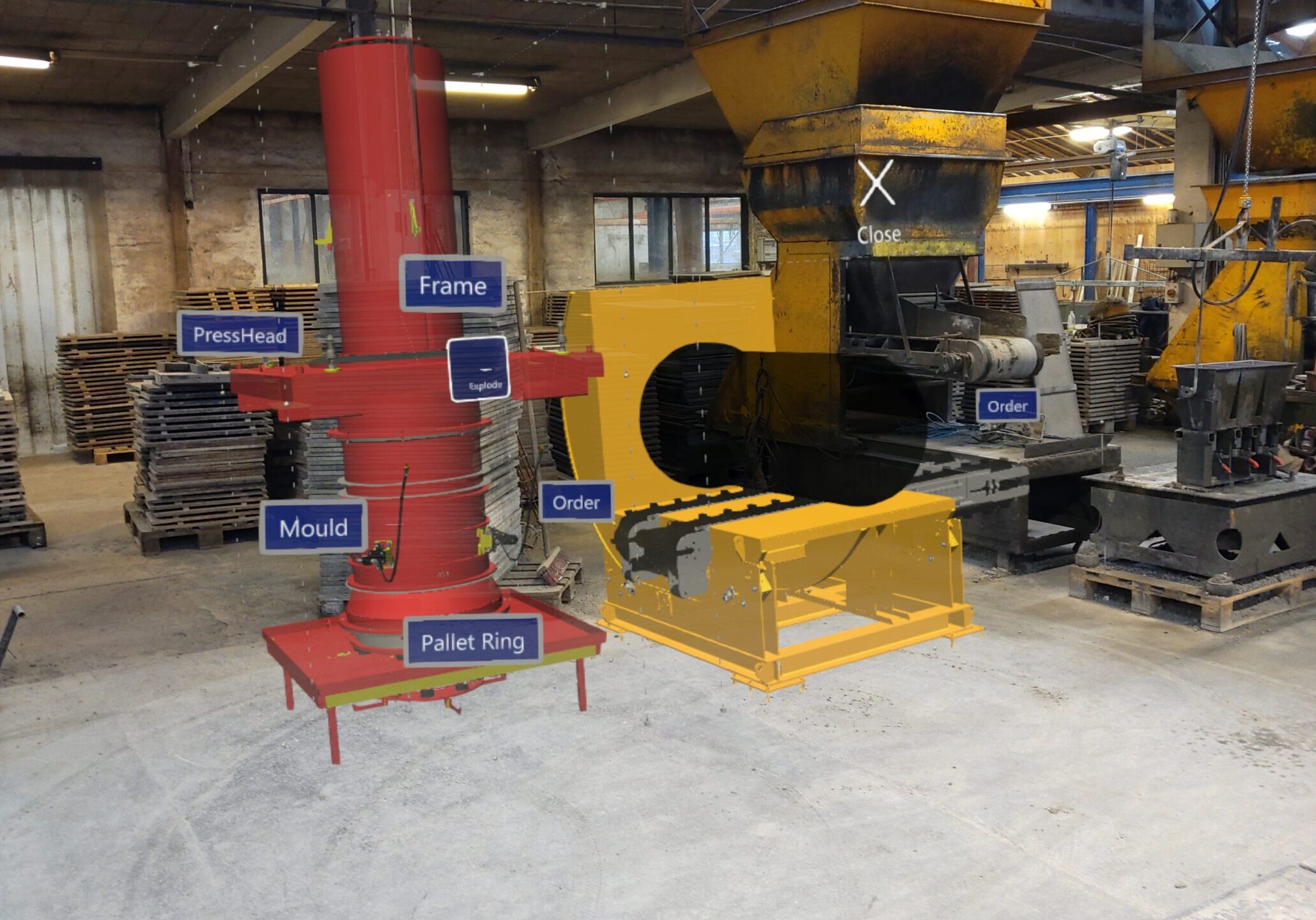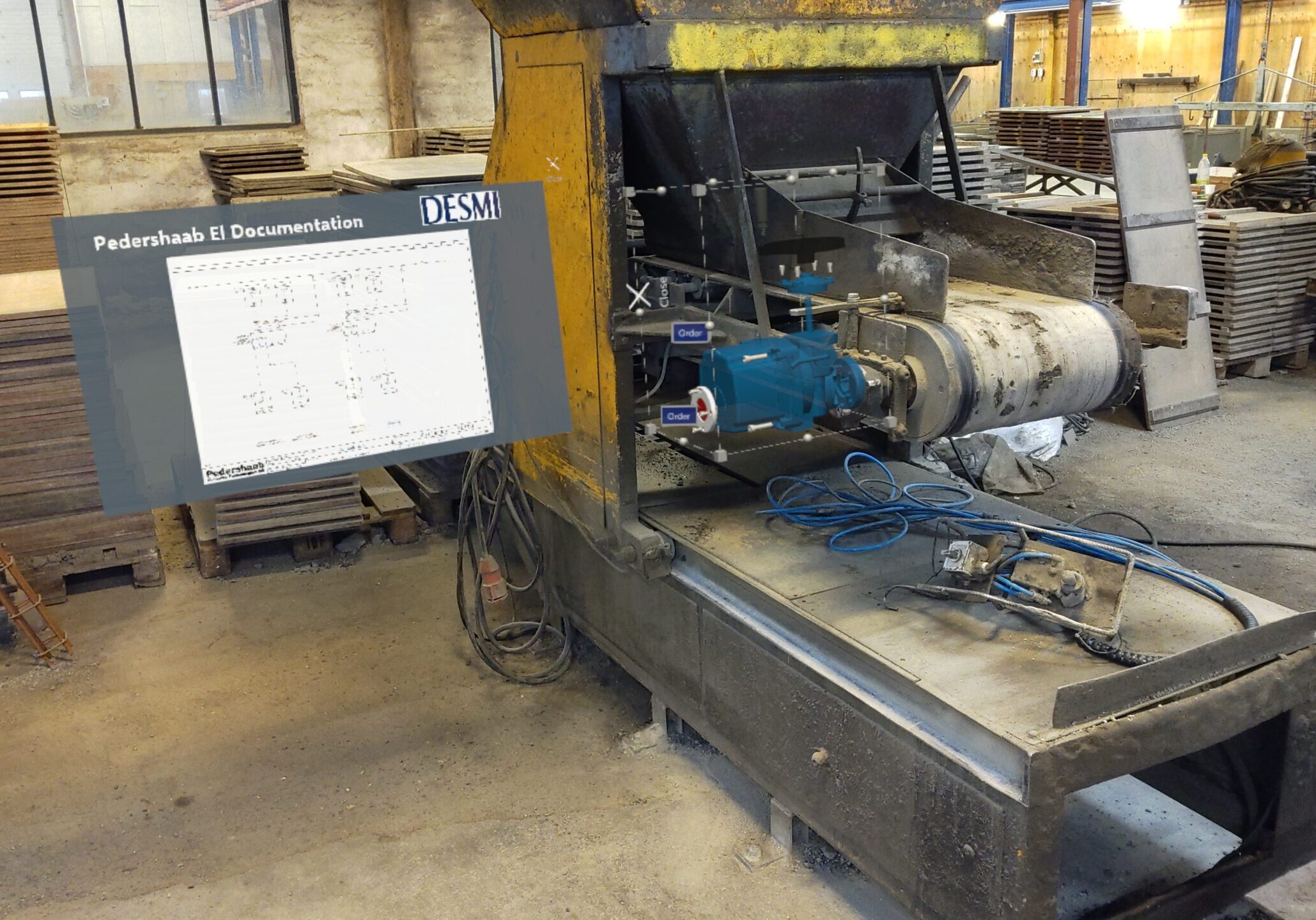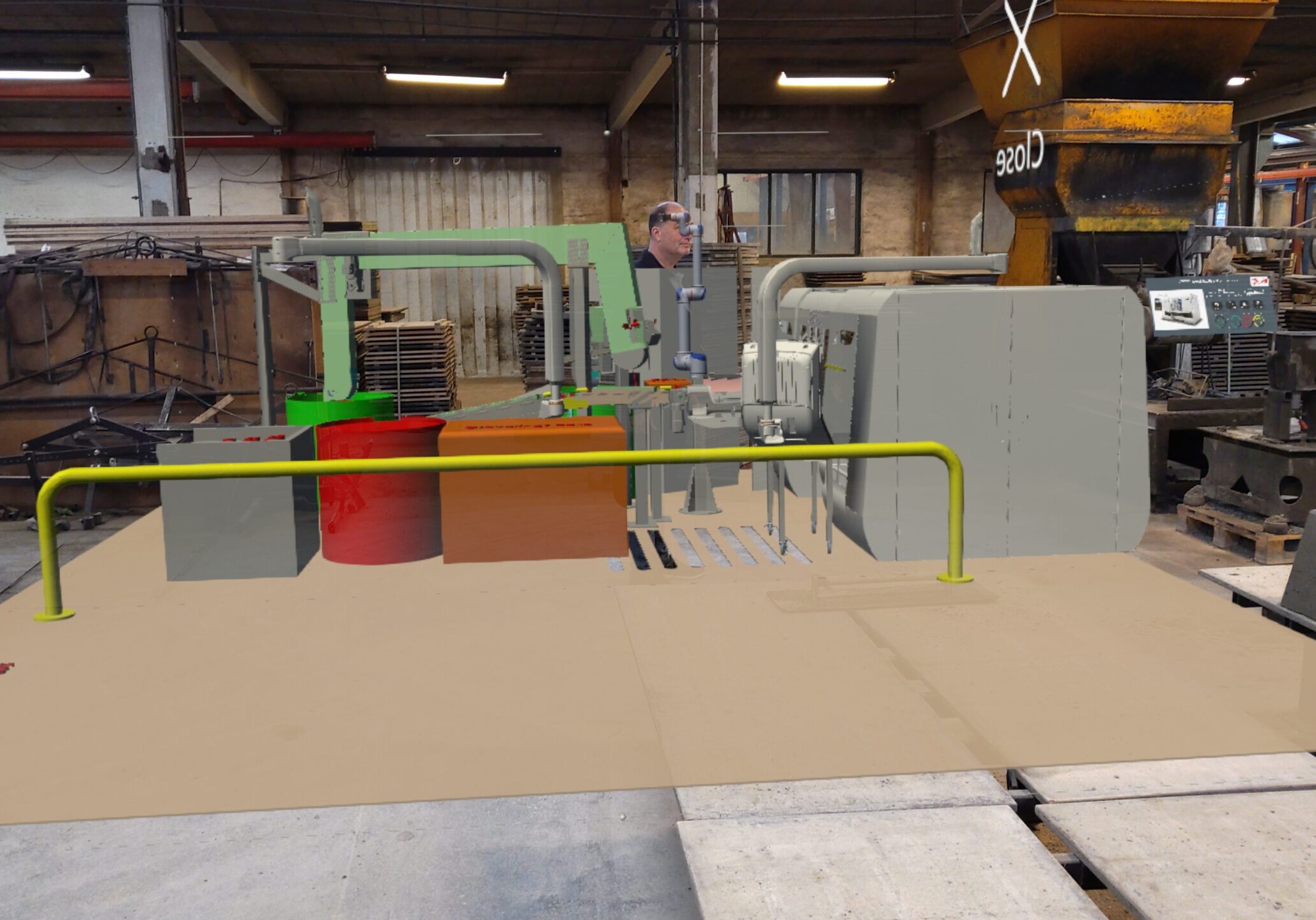Mixed Reality
Mixed Reality (MR) covers technologies much alike AR, which shows data on top of the real world, but MR is not bound to an interaction through a handheld device. MR-devices are therefore designed as glasses, where the user can see digital content laid upon the physical world. The user interacts with the digital content by hand gestures or voice control.
MR-devices are equipped with a camera which allows the user to stream their field of view with others. This offers great advantages for especially industrial companies, who send specialists around the globe to offer local support services.
Remote support is possible through e.g. Microsoft Teams. In a Teams-call the specialist can show local workers the concrete checklists and pictures they need to complete their task. All this while the local worker has both hands free to perform the task.
Companies will quickly experience reductions in resources with the use of Mixed Reality, which then can be expended in other tasks.
The opportunity to cooperate over vast distances gives the companies and their customers a higher chance of finding a correct solution faster, while they share their knowledge with the customer instead of sending a specialist.



